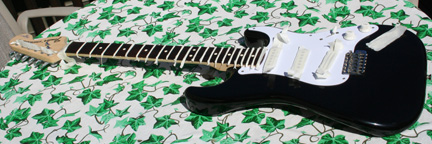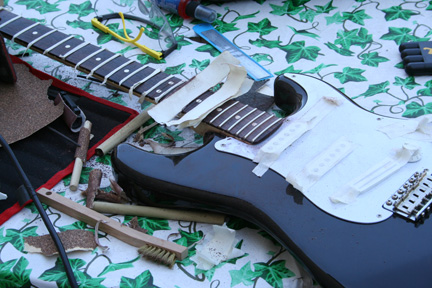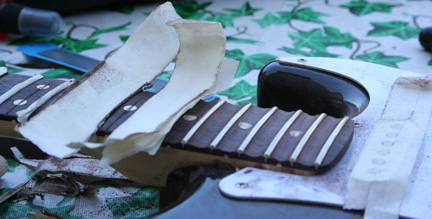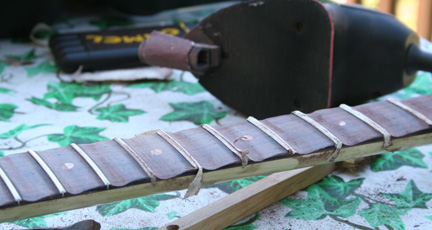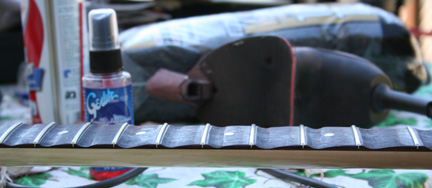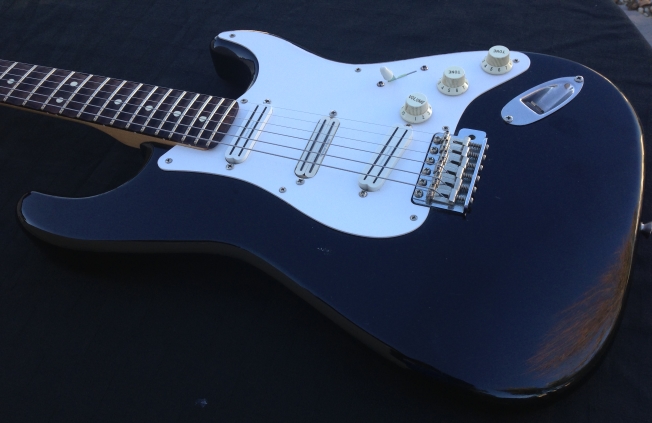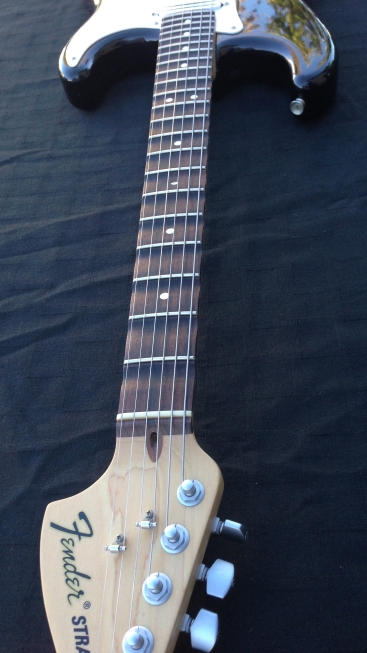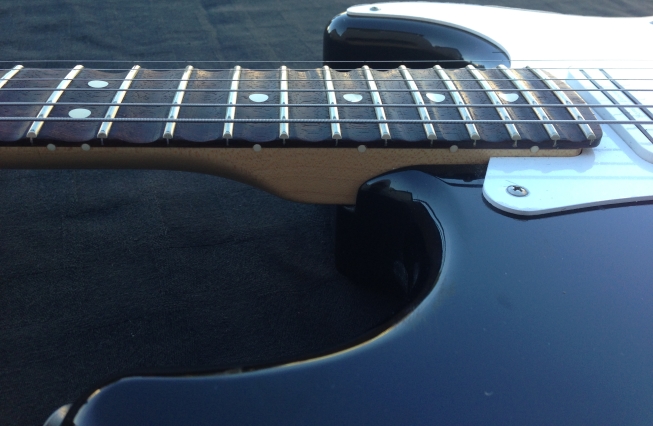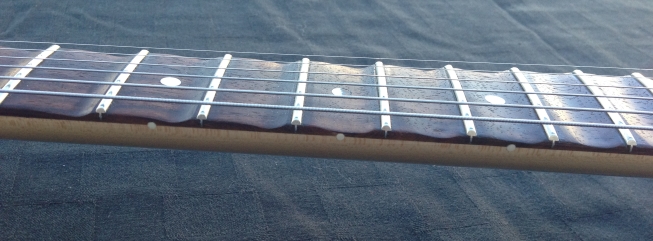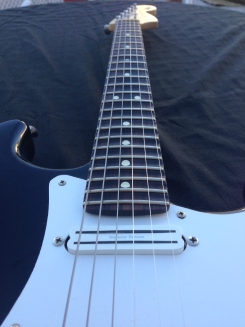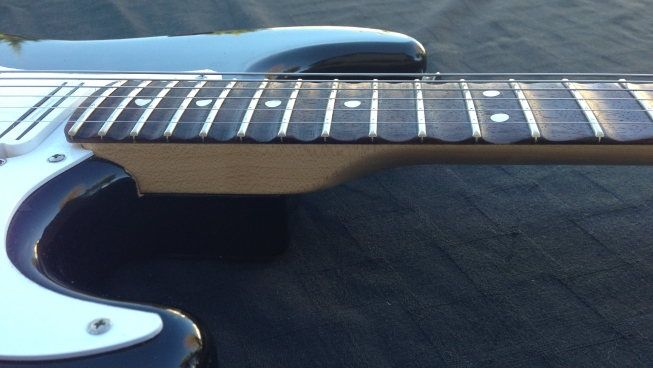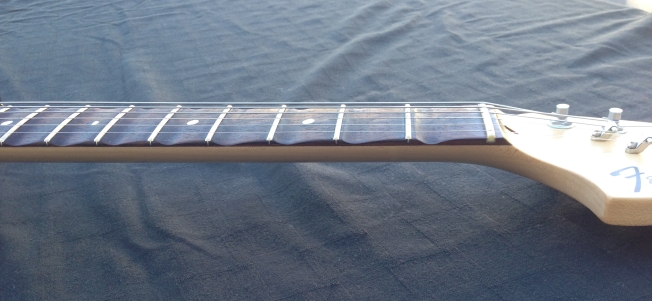Guitar Projects
Scalloping my strat
Being a huge Ritchie Blackmore fan, I decided to scallop my black Stratocaster. At first it seems like a daunting task, but if you that the time in preparation, and you take your time on the process, you can get incredible results.
Tools Used
- Masking Tape
- Duck/Duct Tape
- 60 grit Sandpaper
- 120 grit Sandpaper
- 220 grit Sandpaper
- 320 grit Sandpaper
- 600 grit Sandpaper
- 800 grit Sandpaper
- 1200 grit Sandpaper
- 3000 grit Sandpaper
- 5000 grit Sandpaper
- Dremel
- Various sized dowels
- Mouse Sander (with scoop attachment)
